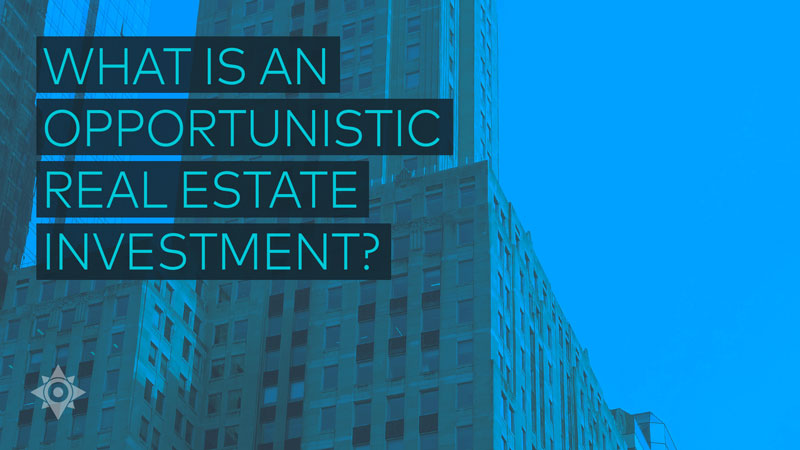Core, Core Plus, Value-Add and Opportunistic are terms used to define the risk and return characteristics of a real estate investment. They range from conservative to aggressive and are defined by both the physical attributes of the property and the amount of debt used to capitalize a project.
Physical attributes of assets can include length and term of the in-place leases, credit worthiness of the tenants, and the physical condition and location of the building. The amount of debt used to capitalize a project is an equally important consideration because it impacts the risk profile of the investment. For example, a property with a credit tenant and long-term lease in place may be attractive to the conservative investor, but not when 80% of the purchase price is financed with debt.
Here is what investors need to know about each term:
Core Real Estate Investments
‘Core’ is synonymous with ‘income’ in the stock market. Core property investors are conservative investors looking to generate stable income with very low risk. Core properties require very little hand-holding by their owners and are typically acquired and held as an alternative to bonds. This type of investing is as close as one can get to passive investing when buying properties directly. A core property requires very little asset management and is typically occupied with credit tenants on long-term leases.
These properties generate stable and consistent cash flow to their owners and their values tend to be the least volatile. For example, a Walgreens drug store with a 30-year lease would be considered a core property, as would a large, fully leased office building in Manhattan with little to no deferred maintenance.
Core investors expect to achieve between a 7% and 10% annualized return and use 40%-45% debt to capitalize a transaction. The majority of the expected return is likely to be generated through cash flow from the property rather than appreciation.
Again, it’s important to keep in mind both the physical characteristics and the capital structure when determining the investment profile. A core asset leveraged to 80% is no longer a core investment. Higher leverage magnifies returns and all property values fluctuate. A 10% decline in the property’s value could violate the lending terms and lead to a default and foreclosure.
Core Plus Real Estate Investments
‘Core Plus’ is synonymous with ‘growth and income’ in the stock market and is associated with a low to moderate risk profile. Core plus property owners typically have the ability to increase cash flows through light property improvements, management efficiencies or by increasing the quality of the tenants. Similar to core properties, these properties tend to be of high-quality and well-occupied.
The potential downside of a core plus real estate investment is that the cash flow is less predictable than a core investment, and these properties require active participation by ownership. A 15-year-old apartment building that is well-occupied but in need of light upgrades is an example of a core plus investment opportunity. The property will produce ample cash flow but some of the cash will be used for future deferred maintenance such as roofs and parking lot repairs.
Core plus investors tend to use between 45% and 60% leverage and expect to achieve returns between 8% and 10% annually.
Value-Add Real Estate Investments
‘Value-Add’ is synonymous with ‘growth’ in the stock market and is associated with moderate to high risk. Value-add properties often have little to no cash flow at acquisition but have the potential to produce a tremendous amount of cash flow once the value has been added. These building often times have occupancy issues, management problems, deferred maintenance or a combination of all three. These investments require a deep knowledge of real estate, strategic planning, and daily oversight by their owners.
Value-add investors tend to use between 60% and 75% leverage to generate annual returns between 11% and 15%.
Opportunistic Real Estate Investments
Opportunistic is the riskiest of all real estate investment strategies. It is also synonymous with ‘growth’ in the stock market, like ‘value-add,’ but it is even riskier. Opportunistic investors take on the most complicated projects and may not see a return on their investment for three or more years. These investment strategies require years of experience and a team of people to be successful. Ground-up developments, acquiring an empty building, land development and repositioning a building from one use to another are examples of opportunistic investments.
Opportunistic properties often have little to no cash flow at acquisition but have the potential to produce a tremendous amount of cash flow once the value has been added. Opportunistic investors tend to use leverage of 70% or more, but the amount of leverage can vary based on the ability to obtain debt. For land development, banks simply won’t lend more than 50%. Opportunistic investors can expect the highest annual returns for a real estate investment, often over 20%.
It’s important for investors to know the difference of each strategy because the actual risk of an investment and the advertised risk may be very different. A conservative investor focused on income generation should be investing in higher-quality properties with low leverage or in a debt fund that lends money. Those with a bigger appetite for risk and a longer time horizon should consider value-add or even opportunistic strategies. Dialing leverage up or down will reduce or increase the financial risk and the risk profile. There is a private real estate investment strategy for virtually every individual investor and finding the investments that suit their personal risk/return profile is essential.



